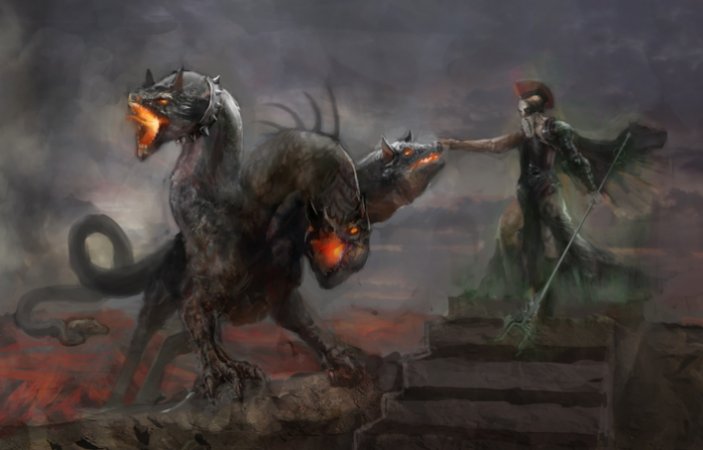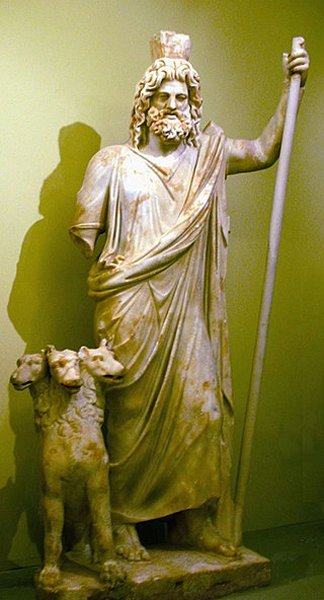Cerberus – Giant Multi-Headed Dog Guards The Underworld Of God Hades In Greek Mythology
Ellen Lloyd - AncientPages.com - Cerberus is a famous monster in Greek mythology. Often described as a giant three-headed dog, Cerberus guards the gates of the Greek underworld, ensuring that no one escapes from the realm of Hades, the god of the dead and the king of the underworld.
Cerberus guarded the underworld, the realm of God Hades. Credit: Stock photo
Stories of Cerberus are mentioned in both Greek and Roman mythology. The depiction of this multi-headed creature depends on the ancient source material. In most cases, Cerberus is described as having three heads, a serpent for a tail, and snakes protruding from parts of his body. Each of the heads is uglier than the other. In some myths, the three heads represent the past, present, and future.
Multi-headed animals are often encountered in ancient myths and legends. In Hindu mythology, for example, we learn about the legendary Uchchaihshravas, a divine, seven-headed flying horse of God Indra. However, in other ancient accounts, such as Hesiod's Theogony, Cerberus has as many as 50 heads, and Pindar (c. 522 – c. 443 BC), an ancient Greek poet from Thebes, gave the monster as many as 100 heads.
Cerberus Predates Ancient Greek Gods And Goddesses
There are many myths about Cerberus, and this guardian dog is mentioned in the Orpheus legend and the 12th labor of Hercules.
As a primordial being predating the Greek gods and goddesses, Cerberus is a unique creature in Greek mythology. According to some Greek myths, Cerberus is associated with Hydra. Cerberus was said to be the offspring of Echidna and the snake-bodied Typhon.
Cerberus and Hades/Serapis. Heraklion Archaeological Museum, Crete, Greece. Credit: Wikipedia, CC BY 3.0
According to Theogony 313, the Hydra is the child of Typhon and Echidna. The characteristic of the Hydra was that if someone cut off one of its heads, it would grow back. The Hydra also had extraordinary teeth that could raise skeletons from the dead.
Cerberus As Guard Dog Of The Underworld
Though described as a monster, Cerberus was undoubtedly dangerous and attacked everyone except spirits, but he was a watchdog and only performed his duty.
"Cerberus' saliva was exceedingly toxic; wherever it fell upon the ground, it would cause aconite to spring. Newcomers were advised to carry baklava (honey cakes) with them as they entered the underworld, as Cerberus would spitefully bite the shades as they entered," Theresa Bane wrote in her book Encyclopedia of Beasts and Monsters in Myth, Legend, and Folklore.
It was almost impossible to pass through the gates to the underworld because Cerberus savagely consumed anyone trying to do so. His job was to prevent everyone from returning to the land of the living. As described earlier in Ancient Pages, Orpheus defeated death, descended into the underground kingdom, and left it alive. Determined to bring back his beloved bride, Eurydice, who had stepped on a poisonous snake whose venom killed her, Orpheus courageously entered the realm of Hades, carrying only his lyre. When Orpheus encountered Cerberus, he started to play on his lyre, and the dog fell asleep.
Cerberus closed his six eyes and dreamt of another life when he had been a real dog. He recalled days before being captured and trained to work as a guardian for the dead in his dreams. While Cerberus was sleeping, Orpheus passed over him and descended to the underworld.
Cerberus, with the gluttons in Dante's Third Circle of Hell. Credit: William Blake, Wikipedia
Cerberus lay down, closed his six eyes, lolled his three tongues, and went to sleep to dream of the days he had been a real dog before being captured and changed and trained as a sentinel for the dead. Orpheus stepped over him and went through the gates.
In Virgil's Aeneid, the hero Aeneas did something similar. He put Cerberus to sleep by giving him drugged cookies. Heracles also managed to pass Hellhound, but only by using force.
Cerberus In Art And Literature
The memory of this Hellhound has been long-lived—the earliest depiction of the Greek monster dog dates from the sixth century BC. On a Corinthian cup (c. 590–580 BC) from Argos, Cerberus is depicted with just one head and snakes rising from his head and body. The Hellhound is sometimes seen in Roman art with a large central lion head and two smaller dog heads on either side.
Cerberus is presented as a vicious creature that rips, rends, and flays the souls around him with his teeth and claws. In Dante's Inferno, Cerberus is mentioned in the Third Circle of Hell. There, he is the guardian and keeper of the Circle of Gluttony.
Sir Arthur Conan Doyle's famous Hound of the Baskervilles and Stephen King's rabid St. Bernard, Cujo, also remind us of the legendary ancient Greek hellhound Cerberus that the future generations have never forgotten.
Updated on February 6, 2024
Written by Ellen Lloyd – AncientPages.com
Copyright © AncientPages.com All rights reserved. This material may not be published, broadcast, rewritten or redistributed in whole or part without the express written permission of AncientPages.com
Expand for referencesMore From Ancient Pages
-
 Shipboard Cannon Found On The Swedish West Coast May Be Europe’s Oldest!
Archaeology | Sep 12, 2023
Shipboard Cannon Found On The Swedish West Coast May Be Europe’s Oldest!
Archaeology | Sep 12, 2023 -
 Millennia Old Extremely Complex Object Of Unknown Origin
Ancient Technology | Jul 8, 2020
Millennia Old Extremely Complex Object Of Unknown Origin
Ancient Technology | Jul 8, 2020 -
 Great Pyramid Puzzle: ‘Lost’ 5,000-Year-Old Piece Of ‘Dixon Relics’ Accidentally Found
Archaeology | Dec 17, 2020
Great Pyramid Puzzle: ‘Lost’ 5,000-Year-Old Piece Of ‘Dixon Relics’ Accidentally Found
Archaeology | Dec 17, 2020 -
 USC Archeologist Discovers Maya Royal Burial Site
Archaeology | Jan 9, 2016
USC Archeologist Discovers Maya Royal Burial Site
Archaeology | Jan 9, 2016 -
 Jambu Tree In Great Cosmogonic Forest Of Sacred Land Of Jambudvipa In Buddhist Mythology
Featured Stories | Nov 2, 2021
Jambu Tree In Great Cosmogonic Forest Of Sacred Land Of Jambudvipa In Buddhist Mythology
Featured Stories | Nov 2, 2021 -
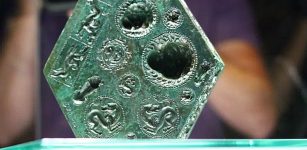 Unique 2,000-Year-Old Hexagonal-Shaped Bronze Matrix Of Sarmizegetusa Regia, Romania
Artifacts | Jan 7, 2016
Unique 2,000-Year-Old Hexagonal-Shaped Bronze Matrix Of Sarmizegetusa Regia, Romania
Artifacts | Jan 7, 2016 -
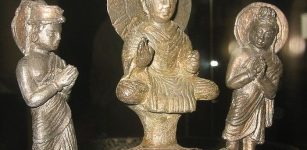 Kanishka Casket – Beautiful Ancient Buddhist Treasure In Gilded Copper
Featured Stories | Jun 14, 2021
Kanishka Casket – Beautiful Ancient Buddhist Treasure In Gilded Copper
Featured Stories | Jun 14, 2021 -
 Unknown Neanderthal Lineage Discovered In “Thorin” Who Lived 50,000 Years Ago
DNA | Sep 11, 2024
Unknown Neanderthal Lineage Discovered In “Thorin” Who Lived 50,000 Years Ago
DNA | Sep 11, 2024 -
 Why Did Neanderthals Visit A Special Cave In Jersey For Over 100,000 Years?
Archaeology | Dec 13, 2016
Why Did Neanderthals Visit A Special Cave In Jersey For Over 100,000 Years?
Archaeology | Dec 13, 2016 -
 Crypts, Coffins, Artifacts And Wooden Church Remains Under The Floor Of Basilica In Poland
Archaeology | Mar 5, 2018
Crypts, Coffins, Artifacts And Wooden Church Remains Under The Floor Of Basilica In Poland
Archaeology | Mar 5, 2018 -
 Finds From Archaeological Dig Were Deliberately Hidden From The Public, Says Man Who Participated In The Excavations
Featured Stories | Dec 3, 2024
Finds From Archaeological Dig Were Deliberately Hidden From The Public, Says Man Who Participated In The Excavations
Featured Stories | Dec 3, 2024 -
 Oldest Aqueduct Dated To 3rd Century BC Discovered In Rome
Archaeology | Apr 4, 2017
Oldest Aqueduct Dated To 3rd Century BC Discovered In Rome
Archaeology | Apr 4, 2017 -
 Blackfoot People Carry DNA From Unknown Ancestors Who Came To America 18,000 Years Ago
DNA | Apr 4, 2024
Blackfoot People Carry DNA From Unknown Ancestors Who Came To America 18,000 Years Ago
DNA | Apr 4, 2024 -
 Ennion: Ancient Master Of Glassblowing And His Legacy
Artifacts | Dec 7, 2020
Ennion: Ancient Master Of Glassblowing And His Legacy
Artifacts | Dec 7, 2020 -
 Jebel Sahaba: Analysis of 13,000-Years-Old Bones Reveals Prehistoric Violent Raids But Not A Single Armed Conflict
Archaeology | May 27, 2021
Jebel Sahaba: Analysis of 13,000-Years-Old Bones Reveals Prehistoric Violent Raids But Not A Single Armed Conflict
Archaeology | May 27, 2021 -
 The Red Dragon Of Wales – Ancient Symbol Dating Back To Roman Times
Ancient Symbols | Jan 3, 2018
The Red Dragon Of Wales – Ancient Symbol Dating Back To Roman Times
Ancient Symbols | Jan 3, 2018 -
 Complex Of Goguryeo Tombs: Beautiful Ancient Wall Paintings Displaying History And Mythology Of North Korea
Civilizations | Oct 19, 2018
Complex Of Goguryeo Tombs: Beautiful Ancient Wall Paintings Displaying History And Mythology Of North Korea
Civilizations | Oct 19, 2018 -
 Vikramashila: India’s Main Intellectual And Learning Center Of Tantric Buddhism
News | Sep 19, 2015
Vikramashila: India’s Main Intellectual And Learning Center Of Tantric Buddhism
News | Sep 19, 2015 -
 Popular Tyrant Peisistratos Tricked The Athenians To Seize Power And People Loved Him
Featured Stories | Jan 12, 2021
Popular Tyrant Peisistratos Tricked The Athenians To Seize Power And People Loved Him
Featured Stories | Jan 12, 2021 -
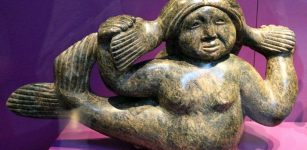 Sedna: Inuit Goddess Sacrificed By Selfish Father Fearing For His Own Life
Featured Stories | Jan 7, 2020
Sedna: Inuit Goddess Sacrificed By Selfish Father Fearing For His Own Life
Featured Stories | Jan 7, 2020

